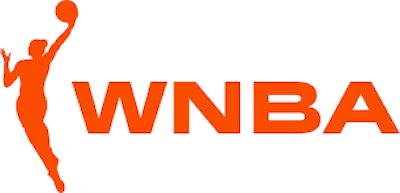
By Nate Horwitz-Willis, James Robert Blair and Peter Titlebaum
It is time to move the WNBA to the traditional basketball season. The current scheduling practice treats women in sports as second-class citizens, a situation that has persisted in professional basketball since 1997. The NBA leveraged its sponsors to eliminate the WNBA's competitor, the American Basketball League (ABL). The ABL, which began in 1996 and featured arguably more skilled players, followed the traditional basketball season from late fall to early spring, matching the men's schedule. However, it was forced to fold when it could not compete with the NBA-backed WNBA.
Consider this scenario: Would the NBA allow its players to compete in another league during the summer because that league offered higher compensation to address a pay gap? Of course not. Yet because the WNBA operates outside the traditional North American basketball season, an estimated 50% of WNBA players compete internationally during the regular basketball season to compensate for the gender pay gap. From both marketing and operational perspectives, why have NBA decision-makers normalized this practice and continued to treat the WNBA as an inferior product? Executives are missing a significant opportunity to leverage the value women bring to the sport, as evidenced by the recent success of the Unrivaled league.
Even during the 2024 NBA All-Star weekend, when the WNBA was included, a major marketing opportunity was squandered. Take the first-ever NBA vs. WNBA 3-point contest: Stephen Curry barely won with 29 points while Sabrina Ionescu scored 26 points in an thrilling competition. Instead of celebrating this remarkable display of skill, NBA announcers fixated on Ionescu's use of the women's 3-point line and the size of the official WNBA basketball. Why not focus on the outstanding competition between two elite athletes?
This historic contest revealed something crucial: it generated genuine competitive excitement. The announcers and NBA participants were visibly stunned by Ionescu's near-victory against Curry. This demonstrates the potential of having the WNBA and NBA seasons align, allowing cross-promotion of their products and co-branding of athletes, teams, mascots, and other intellectual property. The women's game continues to evolve and improve. For example, USA Women's Basketball has won eight straight gold medals over 28 years, yet these remarkable achievements have been inadequately marketed and publicized. Failing to capitalize on these accomplishments by maintaining an off-season schedule is a disservice to the game.
The Caitlin Clark effect cannot be ignored. The women's game has been built on the shoulders of great players and coaches who came before her, in what we might call the BC (Before Clark) era. In modern sports history, few athletes have had Clark's impact. Michael Jordan and Tiger Woods come to mind as athletes who transcended their sports. Through co-branding efforts, their leagues tapped into these athletes' positive brand equity, converting casual viewers into die-hard fans and attracting new audiences to their sports.
Jordan and Woods consistently delivered magical performances that captivated audiences. They became household names, sold out venues, drove merchandise sales, and inspired countless admirers. Caitlin Clark is having a similar effect today. It would be a missed opportunity if WNBA players continue competing outside the traditional basketball season, limiting both the sport's potential and Clark's ability to reach a broader audience.
Now is the time for the NBA to collaborate with the WNBA and prioritize the tremendous value women's basketball offers. Aligning the WNBA and NBA schedules benefits everyone. During peak basketball season, fans would have access to games every day, creating more media storylines and growing both leagues. This schedule adjustment could help address the gender pay gap WNBA players face. The moment has come to enhance WNBA marketing, allowing the sport to reach its full potential and its athletes to connect with a larger audience.
Dr. Nate Horwitz-Willis is a founding partner at Leliwop Global. Dr. James Robert Blair is assistant dean, chair of the faculty, and associate professor of Marketing at Eastern Kentucky University. Dr. Peter Titlebaum is a professor of Sport Management University of Dayton.




































